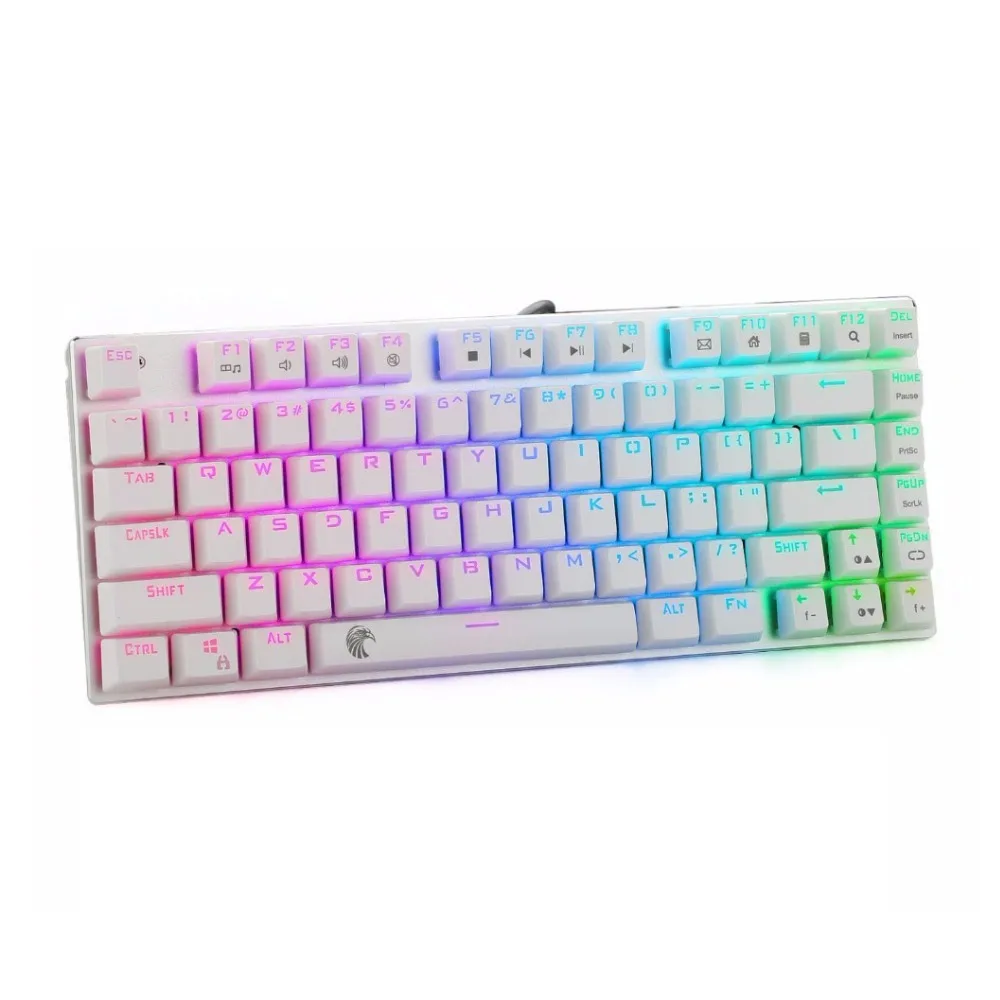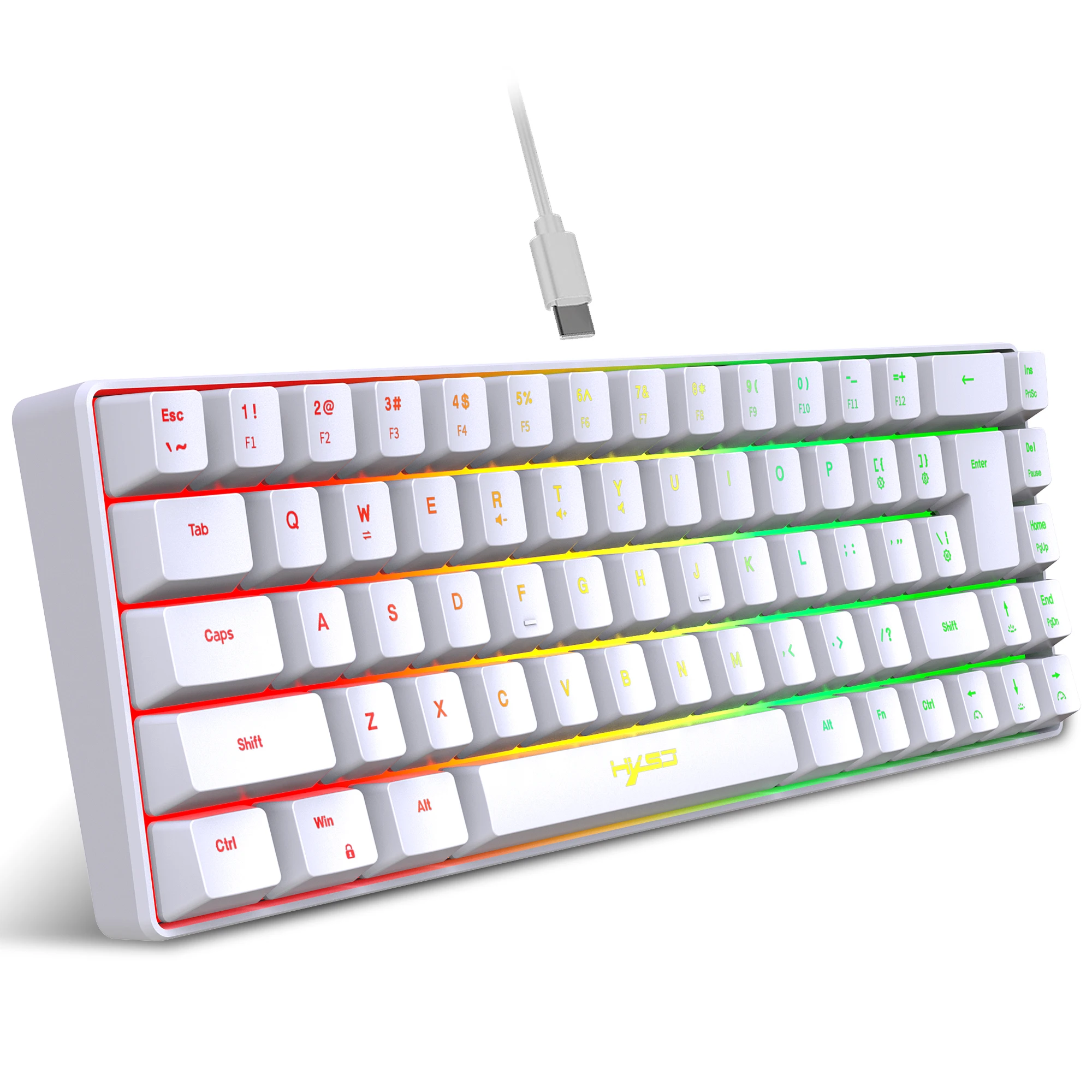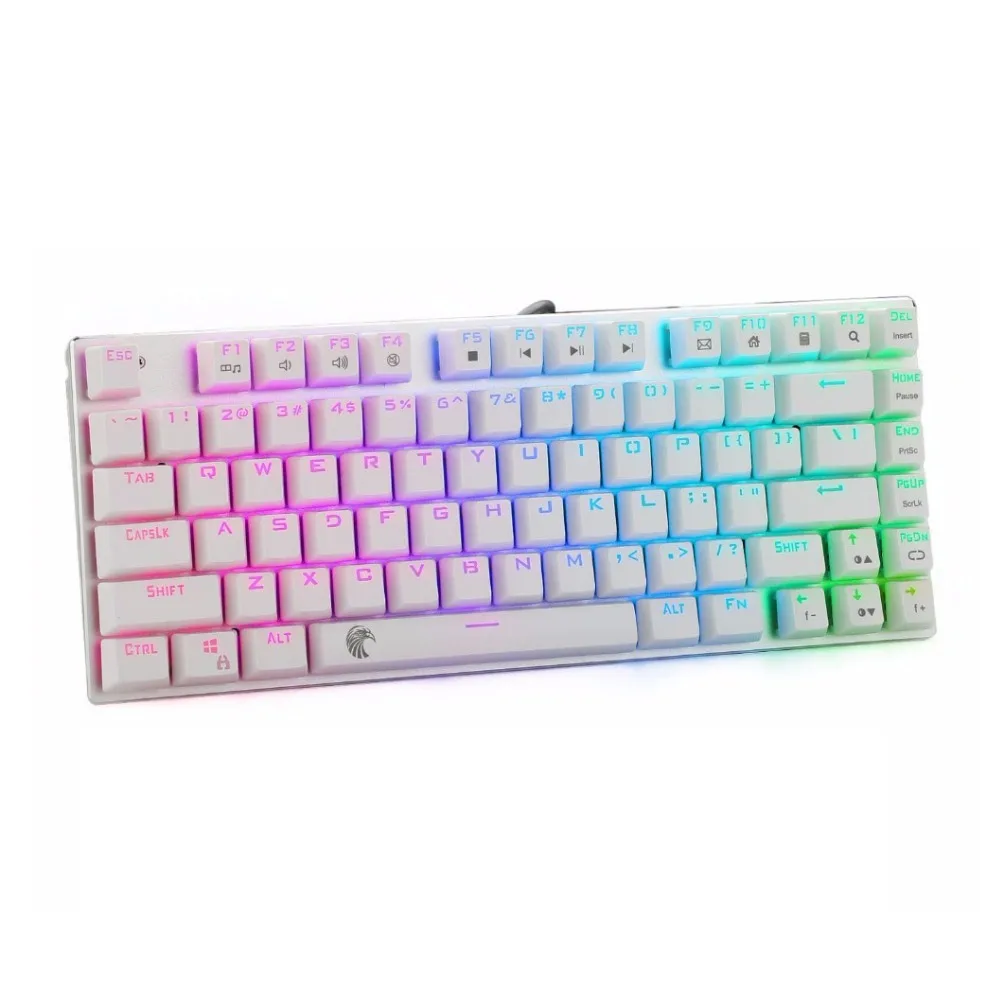The creamiest keyboard is more than just a typing tool—it’s a sensory experience. Known for its ultra-smooth keystrokes and buttery feel, this type of mechanical keyboard delivers unmatched comfort and precision. While “creamy” isn’t an official technical term, it’s widely used in the enthusiast community to describe switches that offer a seamless, consistent, and quiet press with minimal friction.
Most creamiest keyboards use linear mechanical switches like Gateron Milky Yellow, Kailh Box Jade, or custom-tuned lubed switches. These are often pre-lubed at the factory or hand-modified by builders to eliminate any scratchiness or bumpiness. The result is a typing sensation that feels fluid and effortless.
Typists love the creamiest keyboard for long writing sessions, coding marathons, or content creation. The smooth action reduces finger fatigue. It also produces a soft, muted sound profile—perfect for shared workspaces.
Many models feature aluminum cases, foam padding, and silicone mounts. These dampen vibrations and enhance the overall typing feel. They contribute to what enthusiasts call a “thock” or “soft clack” sound.
Custom keycaps made from PBT plastic add durability and texture. They resist shine over time. Dye-sublimated legends stay legible for years.
Whether you’re building your own or buying a pre-assembled version, the creamiest keyboard offers a premium upgrade from standard rubber-dome or stock mechanical boards.
As demand grows, more brands now focus on delivering that silky-smooth performance right out of the box.
 What Makes a Keyboard Feel “Creamy”?
What Makes a Keyboard Feel “Creamy”?
A keyboard earns the title “creamiest keyboard” through precise engineering and careful tuning. First, switch type matters most. Linear switches move straight up and down without tactile bumps. This creates a consistent path.
Switches like Gateron Milky Yellows or Jades are known for their smoothness. Their internal stems glide with little resistance. High-quality materials reduce friction.
Lubrication plays a major role. Factory-lubed switches have oil applied to moving parts. This minimizes noise and enhances glide. Some users re-lube them for even better results.
Stem design affects feel too. Cross-shaped stems must align perfectly with housing. Misalignment causes wobble or scratchiness. Premium switches maintain tight tolerances.
Housing quality matters. Polycarbonate housings tend to feel crisper. Nylon housings may flex slightly. Both can be creamy when properly built.
Mounting style influences stability. Gasket-mounted keyboards allow slight flex. This softens impact and improves comfort. Tray-mounted ones feel stiffer.
Case materials add damping. Aluminum cases reduce rattle. Foam layers inside absorb sound. Silicone rings around switches isolate vibrations.
Even plate material changes the experience. Brass plates add weight and depth. Steel or aluminum offer balance.
All these factors combine to create that sought-after creamy sensation.
Popular Switches Used in the Keyboards
Several switch types dominate the creamy keyboard scene. Gateron Milky Yellow is a top choice. It offers a smooth 50g linear press. Many consider it the gold standard for buttery feel.
Kailh Box Jade switches provide a clean, fast linear motion. They have a light 45g actuation force. Their box design keeps dust out. This maintains smoothness over time.
Durock U4T switches are another favorite. Hand-lubed and polished, they deliver near-frictionless travel. Typists report a floating sensation.
JWK Holy Pandas are hybrid tactiles. Though not fully linear, their soft bump feels smooth. When lubed, they become almost creamy.
Boba U4T switches are highly rated. They use a unique stem coating. This reduces drag. Users praise their consistency across all keys.
Gazzew Boba U4 switches come in linear and tactile versions. The linear model is especially popular. It’s affordable and performs like high-end options.
Some builders prefer custom switches like NovelKeys XIAO or Razer Linear Optical. These are engineered for speed and silence.
Switch films can improve feel. Thin PTFE films reduce friction between stem and housing. They are easy to install.
Ultimately, the best switch depends on personal preference. But all aim to achieve that dreamy, creamy typing experience.
 How Build Quality Affects the Creamy Feel
How Build Quality Affects the Creamy Feel
Even the best switches need proper housing to feel creamy. Case construction sets the foundation. Aluminum cases offer rigidity. They reduce flex and echo.
Foam is layered inside many creamiest keyboards. Top foam sits under the PCB. Bottom foam lines the case. This deadens sound and vibration.
PCB (Printed Circuit Board) quality matters. Hot-swap PCBs let you change switches without soldering. This allows fine-tuning for maximum smoothness.
Silicone dampeners or O-rings surround each switch. They soften landings. This prevents loud clacks and adds bounce control.
Plate thickness and material influence stability. Thicker plates reduce wobble. Brass plates add mass. This deepens the sound profile.
Mounting style makes a big difference. Gasket mounting uses soft silicone or rubber pads. It allows the plate to float slightly. This creates a softer, bouncier feel.
Screw-in stabilizers improve key stability. Stabilizer lubrication eliminates rattling. Costar or 3D-printed mods further refine movement.
Cables also play a role. Braided cables reduce drag. USB-C connectors allow detachable use. Soft-touch cords prevent tugging.
Every part of the build contributes. A poorly assembled board ruins even the best switches.
Thus, craftsmanship is essential for achieving the true creamiest keyboard feel.
Customization Options for Your Keyboard
Building your own creamiest keyboard lets you tailor every detail. Start with the case. Choose from gasket-mounted, tray-mounted, or sandwich designs. Each alters the typing feel.
Select your switches carefully. Buy from trusted vendors. Test different weights and types. 45g to 55g linear switches are ideal for creaminess.
Use a hot-swap PCB. This allows switch swapping without tools. You can experiment until you find your perfect match.
Add foam layers. Cut-to-fit kits are available. Include top, bottom, and switch plate foam for full sound control.
Lube your switches if they aren’t pre-lubed. Use switch-specific lubricants. Apply thin coats to stems and springs. Let them dry before installing.
Choose stabilizers wisely. Try GMK or Durock stabilizers. Lube them with dielectric grease. This removes rattle and improves smoothness.
Pick PBT keycaps. They last longer than ABS. Doubleshot or dye-sub legends won’t wear off. Textured surfaces improve grip.
Color schemes matter too. Pastel, earth tone, or minimalist layouts suit the creamy aesthetic. Match keycaps to your desk setup.
Programmable firmware like QMK or VIA lets you remap keys. Adjust polling rates or lighting effects. This adds functionality to the luxury feel.
With full customization, your creamiest keyboard becomes a one-of-a-kind masterpiece.
 Best Pre-Built Keyboards on the Market
Best Pre-Built Keyboards on the Market
You don’t need to build from scratch to enjoy a creamiest keyboard. Several brands now sell ready-to-use models.
Keychron offers several creamy-feeling boards. The Keychron Q1 Pro uses Gateron switches. Its aluminum case and foam layers enhance smoothness.
Drop (formerly Massdrop) sells high-end kits like the ALT. Many come with factory-lubed switches. Their build quality is excellent.
Jelly Key’s JKL series features gasket mounts and premium materials. The JKL65 is compact and satisfying. It uses custom switches for a silky press.
Boise Keypad’s BK007 has a thick brass plate. Paired with Gateron Yellows, it delivers deep, smooth keystrokes. The case is CNC-machined aluminum.
NuPhy Air75 is a sleek option. It includes silent red switches. These are naturally smoother and quieter. The low-profile design suits modern setups.
MNT Reform is modular and customizable. While not creamy by default, it supports switch swaps. Add lubed switches for a buttery feel.
Rantle Electron offers budget-friendly builds. Their boards come with Gateron or Kailh switches. Many include foam and gasket mounts.
These pre-built options save time. They deliver a close-to-custom experience.
For those who want convenience without sacrificing quality, these are top picks.
Maintaining Your Keyboard
To keep your creamiest keyboard feeling fresh, regular maintenance is key. Dust and debris can enter switches over time. This causes scratchiness.
Clean your keyboard monthly. Use compressed air to blow out crumbs. Wipe keycaps with a damp cloth. Remove them first if possible.
Soak PBT keycaps in warm, soapy water. Scrub gently with a soft brush. Rinse and dry completely before reattaching.
Check switches for wear. If keys feel gritty, consider removing and cleaning them. Re-lube if needed.
Inspect stabilizers. If they rattle, take them apart and re-lube. Use a small amount of grease on the stems.
Avoid eating over your keyboard. Crumbs accelerate wear. Liquids can damage circuits. Always keep drinks away.
Store it in a dry place. Humidity can corrode metal parts. Extreme heat may warp plastic.
Replace worn switches when necessary. Hot-swap boards make this easy.
Keep firmware updated if your board supports it. New features improve performance.
With care, your creamiest keyboard stays smooth and responsive for years.
 Where to Buy Creamiest Keyboards and Components
Where to Buy Creamiest Keyboards and Components
You can buy creamiest keyboards from multiple sources. Online retailers like Amazon carry Keychron, NuPhy, and other branded models.
Mechanical keyboard specialty stores include Drop.com, MeetKeebs, and KeebPro. They offer limited runs and group buys.
AliExpress and Taobao have budget components. Look for verified sellers with good reviews. Shipping takes longer but costs less.
Reddit communities like r/MechanicalKeyboards share deals and recommendations. Members often post links to active sales.
Group buys happen regularly. Enthusiasts pool orders to get lower prices. These are announced on forums or Discord servers.
Local tech markets or maker fairs sometimes sell handmade boards. You can test them in person.
Always check return policies. Some custom builds are final sale.
Investing in quality ensures long-term satisfaction.
Finding the right source helps you get the true creamiest keyboard experience.
Frequently Asked Questions
What does “creamy” mean in keyboards?
It describes a smooth, frictionless keystroke. No scratchiness or bumpiness.
Are creamy keyboards loud?
Not necessarily. With foam and lube, they produce soft thock or muted sounds.
Can I make my current keyboard creamy?
Yes. Replace switches with linear lubed ones. Add foam and lube stabilizers.
Do I need to build my own?
No. Pre-built models like Keychron Q1 Pro offer creamy feels out of the box.
Which switches are the creamiest?
Gateron Milky Yellows, Kailh Jades, and Boba U4T are top choices.
Is a heavier switch creamier?
Not always. Lighter switches (45–55g) often feel smoother due to less spring noise.
Can I use it for gaming?
Absolutely. Fast actuation and smooth travel help in fast-paced games.
Does typing speed improve?
Many users type faster due to reduced finger fatigue and consistent feedback.
 Final Thoughts
Final Thoughts
The creamiest keyboard transforms typing into a joyful, almost meditative activity. It combines engineering, artistry, and personal expression.
From writers to coders, professionals across fields appreciate its comfort and elegance.
While some models require effort to build, others deliver luxury right away. Either way, the result is a tool that feels as good as it looks.
So, if you spend hours at a keyboard, consider upgrading. Because once you’ve experienced the creamiest keyboard, going back feels like a step down.